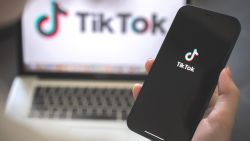As Uber readies to go public, it’s warning investors about a safety report it plans to put out this year that could negatively impact its brand.
In its IPO paperwork filed Thursday, Uber addresses a forthcoming safety-transparency report it expects to release this year, which will include data on claims of sexual assaults and other safety incidents on its platform. The report could have a detrimental impact on the soon-to-be public company’s reputation, Uber warns.
Uber first pledged to release this report nearly a year ago in response to a CNN investigation that found at least 103 Uber drivers in the United States had been accused of sexually assaulting or abusing their passengers in the previous four years. The drivers were arrested, wanted by police, or had been named in civil suits related to the incidents. It was the first time that any numbers had been put to the issue.
“The public responses to this transparency report or similar public reporting of safety incidents claimed to have occurred on our platform … may result in negative media coverage and increased regulatory scrutiny and could adversely affect our reputation with platform users,” the company says in the filing.
Over the last two years, Uber sought to move past a series of scandals that upended the company, including allegations of sexism and harassment, a damning investigation into its workplace culture and the exodus of nearly all of its C-suite. The company has since steadied itself under new leadership. But the transparency report warning is a reminder that safety issues continue to pose a threat to Uber’s brand.
Uber said in the filing that “the successful rehabilitation of our brand will depend largely on maintaining a good reputation” and “minimizing the number of safety incidents,” as well as working to improve its corporate culture and maintaining “ethical behavior.”
After CNN started asking questions about sexual assault incidents, Uber announced increased safety measures in 2018, including a partnership with RapidSOS, a company that sends a rider’s location and relevant information to a local police agency when the rider uses the emergency button in the Uber app. Uber also revamped its background check policy to conduct annual checks on drivers. Uber ultimately announced it would do away with a policy that previously forced individuals with sexual-assault complaints into arbitration and made them sign non-disclosure agreements.
Uber is currently facing legal actions related to safety issues around the country. Just last month, it was sued for $10 million by a woman who alleges she was assaulted by an Uber driver in Washington, DC. A separate lawsuit, also filed last month, accuses the company of misrepresenting its rides as safe. The suit was filed by a woman who alleges she was sexually assaulted by a driver in Los Angeles when she ordered an Uber for a one mile trip.
Uber continues to state that safety is its top priority, but critics argue it hasn’t done enough to adequately alert customers to potential risks associated with its service.
A sexual assault-related lawsuit filed this month by three individuals in Los Angeles listed as Jane Does addresses the phenomenon of “fake Uber drivers,” in which individuals pose as Uber drivers in order to pick up and harm passengers. They argue Uber had knowledge of the concept following five similar alleged assaults in the area but never warned local users. That suit followed news that University of South Carolina student Samantha Josephson was kidnapped and killed when she got into a vehicle she thought was her Uber in late March.
Its its filing, Uber addresses both sexual assault incidents and allegations against drivers, as well as people impersonating drivers, noting it “may receive negative press coverage” as a result that “would adversely impact our brand, reputation, and business.” (Conversely, Uber notes that drivers also face safety threats while on the job. For example, it explicitly mentions reports of violence in Latin America against drivers.)
A lack of transparency about the number of incidents involving drivers has been a sticking point in lawsuits against the company. They have claimed Uber tries to hide the scope of the issue from its customers.
Lyft, Uber’s chief rival in the US, isn’t immune to safety issues. CNN’s investigation last April also uncovered similar incidents of assault on Lyft’s platform, and is playing catch-up on safety features.
On Monday, Lyft released a blog post announcing it is rolling out continuous criminal background checks to monitor for criminal offenses by drivers on a daily basis. (Uber announced this update in July.)
Lyft also said it is adding “enhanced identity verification” to help crack down on fraudulent drivers. Drivers chosen at random will be prompted to take selfies or real-time photos of their face which will be compared to the approved driver’s license they used to apply to the platform. Uber came out with a similar feature called “real-time ID check” in 2017.
For both companies, the ability to better control safety is critical. In its filing, Uber notes how its future depends on it: If it is unable to respond to reported safety incidents “in a timely and acceptable manner,” its ability to attract and retain platform customers “could be adversely affected.”



























